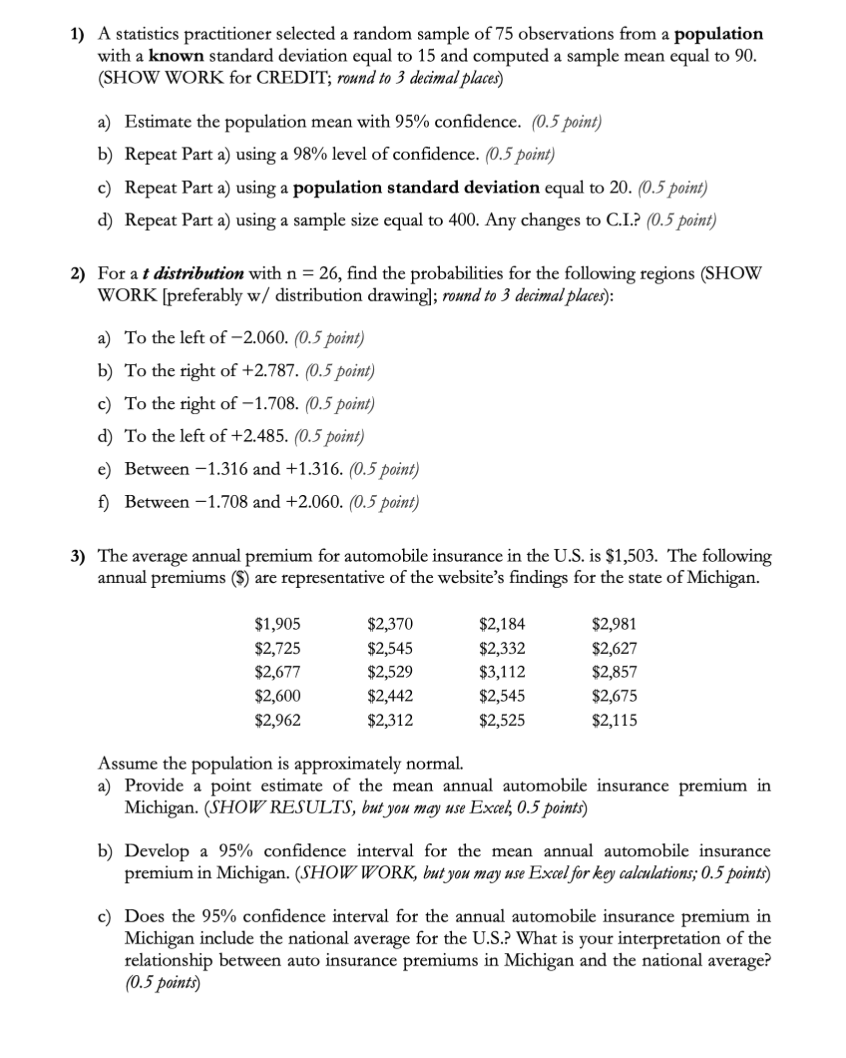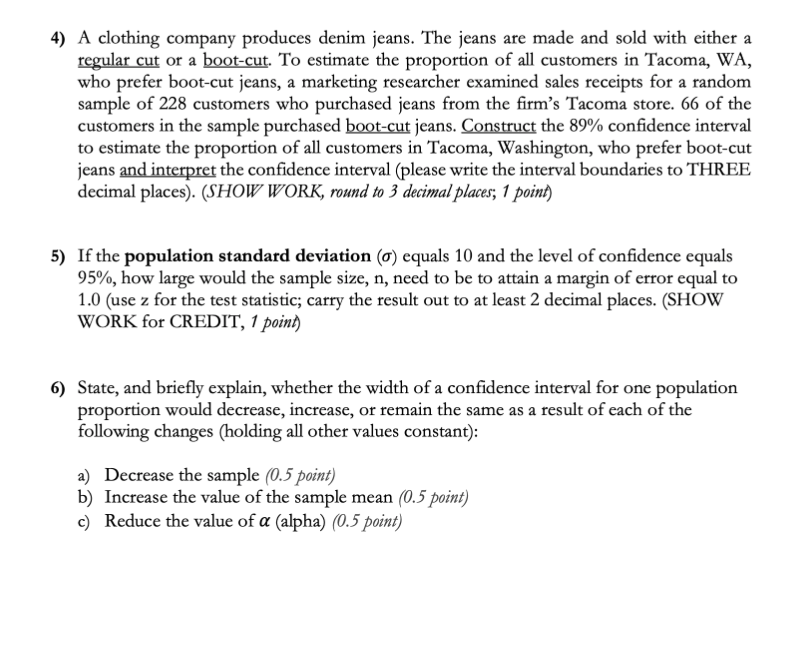1) A statistics practitioner selected a random sample of 75 observations from a population with a known standard deviation equal to 15 and computed a sample mean equal to 90. (SHOW WORK for CREDIT; round to 3 decimal places) a) Estimate the population mean with 95% confidence. (0.5 point) b) Repeat Part a) using a 98% level of confidence. (0.5 point) c) Repeat Part a) using a population standard deviation equal to 20. (0.5 point) d) Repeat Part a) using a sample size equal to 400. Any changes to C.I.? (0.5 point) 2) For a t distribution with n = 26, find the probabilities for the following regions (SHOW WORK [preferably w/ distribution drawing]; round to 3 decimal places): a) To the left of -2.060. (0.5 point) b) To the right of +2.787. (0.5 point) c) To the right of -1.708. (0.5 point) d) To the left of +2.485. (0.5 point) e) Between -1.316 and +1.316. (0.5 point) f) Between -1.708 and +2.060. (0.5 point) 3) The average annual premium for automobile insurance in the U.S. is $1,503. The following annual premiums ($) are representative of the website's findings for the state of Michigan. $1,905 $2,370 $2,184 $2,981 $2,725 $2,545 $2,332 $2,627 $2,677 $2,529 $3,112 $2,857 $2,600 $2,442 $2,545 $2,675 $2,962 $2,312 $2,525 $2,115 Assume the population is approximately normal. a) Provide a point estimate of the mean annual automobile insurance premium in Michigan. (SHOW RESULTS, but you may use Excel; 0.5 points) b) Develop a 95% confidence interval for the mean annual automobile insurance premium in Michigan. (SHOW WORK, but you may use Excel for key calculations; 0.5 points) c) Does the 95% confidence interval for the annual automobile insurance premium in Michigan include the national average for the U.S.? What is your interpretation of the relationship between auto insurance premiums in Michigan and the national average? (0.5 points)4) A clothing company produces denim jeans. The jeans are made and sold with either a regular cut or a boot-cut. To estimate the proportion of all customers in Tacoma, WA, who prefer boot-cut jeans, a marketing researcher examined sales receipts for a random sample of 228 customers who purchased jeans from the firm's Tacoma store. 66 of the customers in the sample purchased boot-cut jeans. Construct the 89% confidence interval to estimate the proportion of all customers in Tacoma, Washington, who prefer boot-cut jeans and interpret the confidence interval (please write the interval boundaries to THREE decimal places). (SHOW WORK, round to 3 decimal places; 1 point) 5) If the population standard deviation () equals 10 and the level of confidence equals 95%, how large would the sample size, n, need to be to attain a margin of error equal to 1.0 (use z for the test statistic; carry the result out to at least 2 decimal places. (SHOW WORK for CREDIT, 1 point) 6) State, and briefly explain, whether the width of a confidence interval for one population proportion would decrease, increase, or remain the same as a result of each of the following changes (holding all other values constant): a) Decrease the sample (0.5 point) b) Increase the value of the sample mean (0.5 point) c) Reduce the value of a (alpha) (0.5 point)








